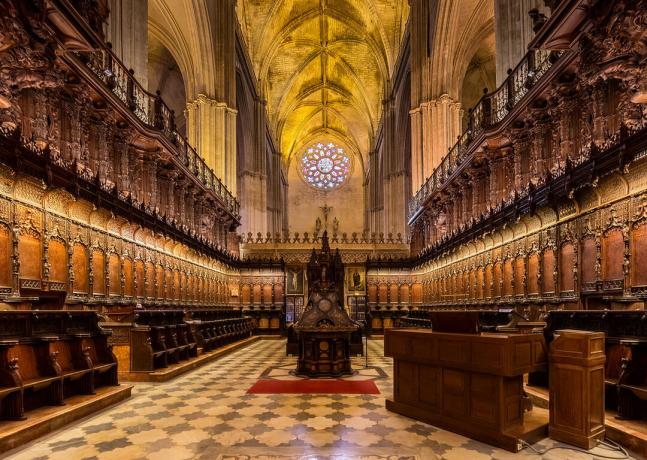Cultural Heritage or Historical Heritage is a preserved asset that has an inestimable value for the identity and history of a people, community or region. There are two main types of cultural heritage:
- material cultural heritage: are the concrete goods that generally have commercial value, such as paintings, sculptures, monuments, architectural ensembles, among others. That is, everything that can be preserved and has considerable durability;
- Intangible cultural heritage: heritage linked to the emotional, spiritual or behavioral side of a people or region, such as typical foods, popular dances, rituals, among others.
Brazilian cultural heritage
Due to its great cultural diversity, Brazil has numerous national material, intangible and even human heritage (world cultural heritage).
All have an important role in preserving the country's identity and history, as they are part of the formation of the different peoples and cultures that exist in Brazil.
Christ the Redeemer
The statue of Christ the Redeemer, located in Rio de Janeiro, was listed in 2008 as a Brazilian material cultural heritage. It is located in Morro do Corcovado, a mountain with more than 700 meters of altitude and is considered one of the biggest tourist spots in Brazil.
 Statue of Christ the Redeemer, in the state of Rio de Janeiro
Statue of Christ the Redeemer, in the state of Rio de Janeiro
Sheets, in Bahia
The architectural and landscape area of Lençóis, located in Bahia, was declared a Brazilian material cultural heritage in 1973. The area represents the economic and cultural history of Chapada da Diamantina, an important 18th century diamond mining site.
 Sheets, Bahia
Sheets, Bahia
Serra da Capivara National Park
Located in Piauí, the park was listed as a material cultural heritage of Brazil in 1991. It is an important area for the country's history, as it has more than 400 archaeological sites, with engravings and cave paintings, which tell the story of our ancestry.
 Serra da Capivara National Park, Piauí
Serra da Capivara National Park, Piauí
Shrimp bean ball
Acarajé is a typically Brazilian food, made with palm oil and linked to the cult of the orixás. Its commercialization is predominantly carried out in Salvador (BA), made especially by Bahians.
This food is considered an intangible Brazilian cultural heritage and is part of the Ofício das Baianas, as well as the black-eyed bean dumpling.
 Bahian do acarajé
Bahian do acarajé
Artisanal Way of Making Cheese in Minas Gerais
The Artisanal Way of Making Cheese in Minas Gerais is considered an intangible cultural heritage in Brazil mainly due to its form of production. Minas Gerais is a great milk producer and was known for using raw milk to produce the famous Minas Gerais cheese.
This mode of production gained prominence for being a great reuse of milk, which could be discarded.
 Canastra cheese, from Minas Gerais
Canastra cheese, from Minas Gerais
Ouro Preto Architectural Ensemble
The Ouro Preto architectural complex, in Minas Gerais, is considered a material cultural heritage of Brazil. The city that is over 400 years old is a legacy of colonial Brazil and was built with inspirations of Spanish urbanism at the time, as well as being known for its tiled constructions Portuguese.
In 1997, Ouro Preto was considered a world cultural and historical heritage site by UNESCO.
 Ouro Preto architectural ensemble.
Ouro Preto architectural ensemble.
Nazare's Cirio
It is one of the most famous religious festivals in Brazil. This great devotion event brings together thousands of people every year, in some cities of Belém, Pará.
In addition to being a Brazilian intangible cultural heritage, in 2013 UNESCO inscribed this great party on the Representative List of the Cultural Heritage of Humanity.
 Feast of the Círio de Nazareth, 2014.
Feast of the Círio de Nazareth, 2014.
Capoeira
It is a Brazilian cultural expression that mixes dance, martial arts and music, which has become one of the most practiced sports in the country.
In addition to being a Brazilian intangible cultural heritage, UNESCO recognized capoeira as a cultural heritage of humanity in 2014.
 Capoeira
Capoeira
Material and intangible heritage: what's the difference?
One of the main differences between material and intangible heritage is what classifies them. In other words, material assets are concrete and tangible, and intangible assets are related to the knowledge, beliefs, behaviors and practices of a community or region.
Another big difference between the two is the way both are preserved. The material heritage is unique, that is, it cannot be reproduced. If so, it will be considered a replica and not the heritage itself. That's why the way to preserve yourself is to keep your originality.
Intangible heritage can be reproduced and preserved by practicing, so that its value remains culturally alive.
An example is capoeira, as it is an intangible heritage, the more it is reproduced, the more it remains culturally alive. Christ the Redeemer, on the other hand, as a material heritage, is unique and any type of reproduction will be considered a replica.
The importance of preserving cultural heritage
With the rapid development of globalization, there is always a tendency to reproduce mass culture, that is, the standardization of behavior and aesthetic representations in cities.
In this way, the tendency is to reproduce the culture of hegemonic countries, such as the United States, the that generates a loss of non-hegemonic culture, that is, popular culture, constructed peripherally.
Cultural heritage must be preserved so that the identity and history of a community or region are maintained. Therefore, there are regulatory bodies that are responsible for protecting and preserving assets.
In Brazil, for example, the Iphan (Institute of National Historical and Artistic Heritage) is responsible for protecting and preserving the educational and cultural function of Brazilian and world heritages found in the country.
Worldwide, the UNESCO (United Nations Science and Culture Organization) is charged with developing methods of protection of cultural heritage, which are important to the history of the construction and development of the world.
See also other subjects that may be of interest:
- cultural landscape;
- UNESCO;
- Brazilian culture;
- Afro-Brazilian Culture;
- Folklore;
- Culture.



